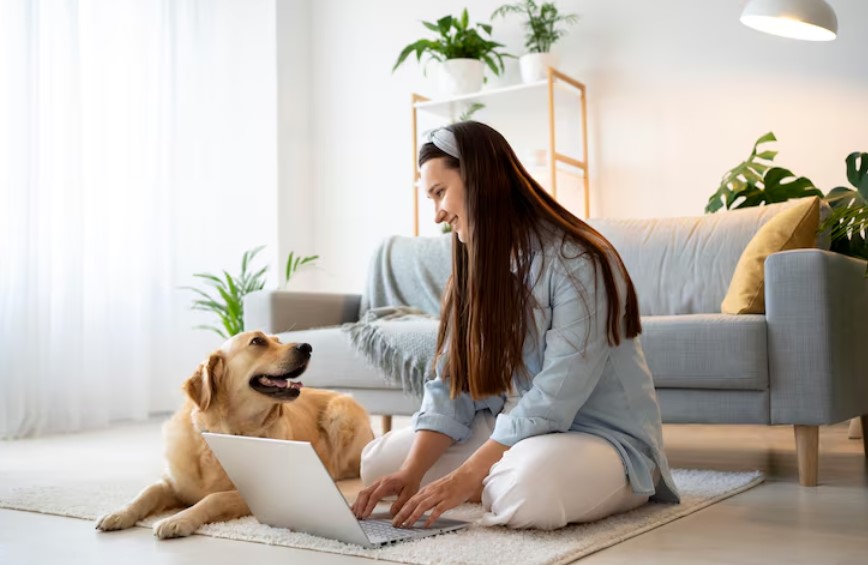Living with a dog in an apartment presents its own unique challenges. Limited space, neighbours nearby, and fewer places to roam all require thoughtful planning to keep your dog both healthy and content. Below is a rewritten guide based on best practices (original article: “How to keep your dog healthy and happy while living in an apartment”) with additional insights and a brief look at pet-friendly housing options in Melbourne.
1. Ensure Adequate Exercise & Mental Stimulation
Dogs need both physical and mental outlets, no matter how small the space. In an apartment:
- Daily walks and play sessions are essential. Aim for at least two walks a day, adapting length and pace to your dog’s breed, age, and energy level.
- Interactive toys and puzzle feeders help keep your dog’s mind active. Hide treats in Kong toys or puzzle feeders to prolong their enjoyment.
- Indoor games like tug, fetch in hallways (if space allows), or scent-based hide-and-seek can burn off energy.
- Rotating toys helps prevent boredom—don’t leave the same toys out every day.
These strategies help reduce anxiety, restlessness, or destructive behaviour.
2. Create a Comfortable Indoor Environment
The home environment plays a big role in your dog’s well‐being:
- Cozy resting area: Provide a soft bed or a crate (if crate trained) in a quiet corner, away from drafts and foot traffic.
- Temperature and ventilation: Keep the apartment adequately ventilated and at a comfortable temperature, especially during hot or cold seasons.
- Flooring considerations: Use rugs or mats to help with traction and joint comfort, especially for older dogs or those with mobility issues.
- Noise management: Use white noise machines or soft music to buffer external sounds that might stress your pet (e.g. traffic, neighbours).
3. Build a Routine & Encourage Good Behaviour
Establishing structure helps dogs feel secure:
- Consistent schedule: Feed, walk, and play at similar times each day. Predictability helps reduce anxiety.
- Potty breaks: For apartment living, designate a relief spot (balcony turf patch, indoor potty tray, or regular courtyard walks) and reinforce it with praise.
- Positive reinforcement training: Teaching cues (sit, stay, leave it, calm) helps manage interactions with neighbours, guests, or other dogs.
- Socialisation & controlled exposure: Introduce your dog gradually to sounds, neighbours, elevators, and common areas—reward calm behaviour.
4. Health, Grooming & Cleanliness
In tighter quarters, good hygiene helps prevent issues:
- Regular grooming: Brush often to reduce shedding and vacuum frequently to manage fur buildup.
- Paw care & cleaning: Wipe paws after walks to avoid tracking in dirt or chemicals (especially in wet or icy seasons).
- Vet check-ups & vaccinations are important—urban environments expose pets to more contact with other animals or surfaces.
- Parasite control and parasite prevention (fleas, ticks) should be maintained year-round.
- Eye, ear, and dental care: Clean ears, brush teeth, and monitor eyes regularly, because small problems can escalate faster in close quarters.
5. Communicate & Be Neighbourly
In apartment settings, your dog’s behaviour affects those around you:
- Respect quiet hours: Avoid letting your dog bark or become noisy late at night or early morning.
- Use communal spaces thoughtfully: Always leash your dog in shared hallways, lifts, and green areas; clean up after them immediately.
- Talk to neighbours: Let neighbours know your dog is friendly (or not) so they aren’t startled. A little courtesy can go a long way.
- Noise mitigation: If your dog barks at hallway noises, try desensitisation training or calming aids (e.g. pheromone diffusers), with your vet’s guidance.
6. Pet-Friendly Accommodations in Melbourne: What to Look For
If you’re renting or relocating in Melbourne with a dog, there are modern apartments and rental communities that cater to pet owners:
- Pet-friendly rentals: Some property management firms in Melbourne explicitly advertise pet-welcome apartments, sometimes with size or breed restrictions but still more open than traditional “no pets” policies.
- Amenities tailored to pets: Quality pet-friendly buildings may offer on-site dog runs, pet wash stations, doggy play zones, or secure green courtyards within the development.
- Proximity to parks and walking routes: Look for apartments near dog-friendly parks, walking trails or off-leash areas so daily exercise becomes more convenient.
- Balcony or terrace space: A small balcony with safe railing height or outdoor access is a bonus—especially when you can’t always take your dog out.
- Flexible pet policies in serviced apartments: Some serviced apartments, apartment hotels, or long-stay complexes in Melbourne provide specially designated pet-friendly units. These often supply pet amenities (e.g. bowls, beds) and consider pets in their leasing terms.
For example, various Melbourne inner-city suburbs like Fitzroy, Collingwood, Carlton, and Brunswick have seen the rise of newer apartment developments that actively market pet-friendly features. Prospective renters often filter listings by “pet friendly” to find suitable homes.
Property portals and real estate sites in Melbourne frequently tag apartments as “pet-friendly,” featuring them prominently. While breed or weight restrictions may still apply, the fact that more apartments are open to pets reflects growing demand for inclusive housing solutions in Melbourne’s rental market.
Conclusion
Living in an apartment with a dog requires more intention and adaptation than living in a house with a yard. With thoughtful routines, mental and physical enrichment, hygiene practices, and neighbourly habits, you can raise a happy and healthy pet in smaller spaces.
Importantly, the rise of pet-friendly accommodations in Melbourne and other cities is making it easier for urban dwellers to find homes that welcome both them and their four-legged companions. By combining good training and care at home with choosing the right living environment, you can ensure that apartment life is just as fulfilling for your dog—and for you.
